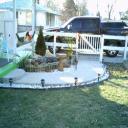Yahoo Answers is shutting down on May 4th, 2021 (Eastern Time) and beginning April 20th, 2021 (Eastern Time) the Yahoo Answers website will be in read-only mode. There will be no changes to other Yahoo properties or services, or your Yahoo account. You can find more information about the Yahoo Answers shutdown and how to download your data on this help page.
Trending News
2 Answers
- IndianaHoosierLv 51 decade agoFavorite Answer
Conventional lubricants and die cooling oils can be used without being deteriorated due to high temperature. It is preferable to forcibly cool the soaked steel to adjust the temperature of the steel at which it is forged. The forged steel is then age hardened to exhibit inherent hardness.
The success of the forging process relies on the effectiveness of the lubricant, but no simple method for selecting a lubricant exists. Each lubricant has advantages as well as disadvantages. Oil and graphite applies easily and works well at many temperatures, but is explosive and expensive. Water and graphite costs less and helps cool dies, but requires careful application to work; in addition, graphite dust can collect in the work area and cause problems for workers. Synthetic lubricants are cost effective and less hazardous but must be applied through spraying, may impede metal flow, and are ineffective to use for forging complex shapes.
Here is a few sites that will probley do better of explaining to your needs.
Good Luck!
Source(s): http://www.magnuminduction.com/ http://www.answers.com/topic/iron-and-steel-forgin... http://macraesbluebook.com/search/product_company_... - 1 decade ago
I think in the old days they didnt much care. maybe 5W-30
Just kidding. You making fine cutlery or what. Water always worked well for me.
Hardening
Hardening involves heating a steel to its normalising temperature and cooling (Quenching ) rapidly in a suitable fluid e.g oil, water or air.
Steel is basically an alloy iron and carbon some steels alloys have have various other elements in solution. When steel is heated above the upper critical temperature (about 760oC), the iron crystal structure will change to face centered cubic (FCC), and the carbon atoms will migrate into the central position formerly occupied by an iron atom. This form of red-hot steel is called austentite (γ iron). If this steel form cools slowly, the iron atoms move back into the cube forcing the carbon atoms back out, resulting in soft steel called pearlite. If the sample was formerly hard, this softening process is called annealing.
If the steel is cooled quickly (quench) by immersing it in oil or water, the carbon atoms are trapped, and the result is a very hard, brittle steel. This steel crystal structure is now a body centered tetragonal(BCT) form called martensite.
Source(s): college welding course and owned a small metal art business http://www.roymech.co.uk/Useful_Tables/Matter/Hard...


